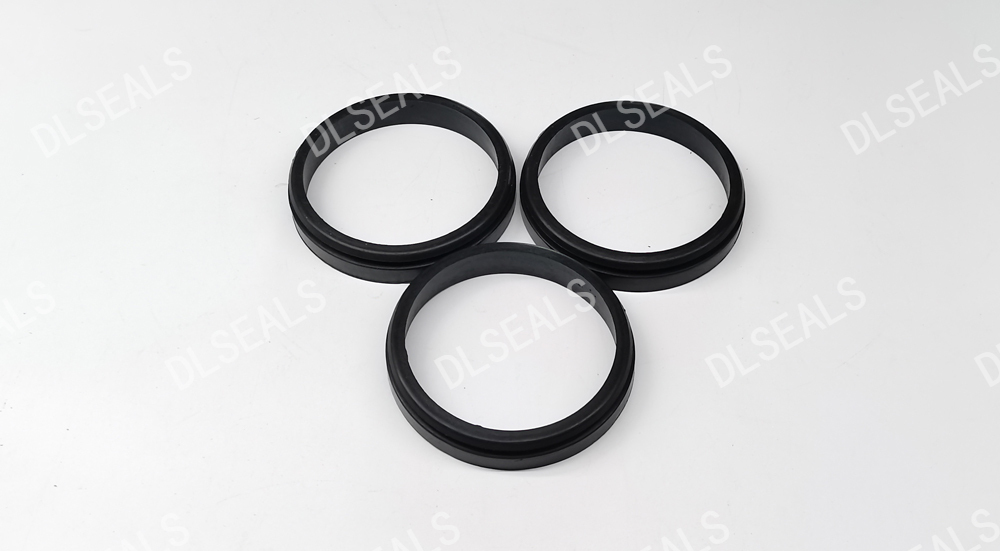
There are many types of materials for rubber seals, and each material has different properties and is suitable for different application scenarios. The following is a comparison of some common rubber sealing materials, including their main characteristics, advantages and application areas:
1. Nitrile Butadiene Rubber (NBR)
Features:
Oil resistance: Good resistance to petroleum products, fuels and hydraulic oils.
Wear resistance: Relatively high, suitable for applications with greater wear.
Heat resistance: Medium, usually with a temperature range of -40°C to +100°C.
Advantages:
Low cost: Compared with other high-performance rubbers, the cost is relatively economical.
Good mechanical properties: Suitable for high-load and friction applications.
Applications:
Mainly used in the automotive industry, hydraulic equipment, oil seals, fuel systems, etc.
2. Fluoroelastomer (FKM)
Features:
High temperature resistance: Able to withstand temperatures up to +200°C or even higher.
Chemical resistance: Excellent resistance to chemicals, solvents, acids and alkalis.
Aging resistance: Excellent anti-oxidation and anti-ultraviolet properties.
Advantages:
Superior performance: Suitable for extreme environments and high-demand applications.
Long life: Strong aging resistance and extended service life.
Applications:
Widely used in aerospace, chemical, automotive and high-temperature industrial equipment.
3. Silicone Rubber (SI)
Features:
High and low temperature resistance: Able to work stably in the temperature range of -50°C to +200°C.
Weather resistance: Excellent resistance to UV, ozone and climate change.
Flexibility: Good flexibility at high temperatures.
Advantages:
Wide operating temperature range: Suitable for extreme temperature environments.
Non-toxic: Suitable for applications in the food and medical industries.
Applications:
Food processing, medical equipment, electronic components, automotive industry, etc.
4. Polyurethane (PU)
Features:
Abrasion resistance: Stronger than nitrile rubber and silicone.
Oil resistance: Good tolerance to oils and fuels.
Cold resistance: Good elasticity at low temperatures.
Advantages:
Strong wear resistance: suitable for high friction and high load applications.
Good elasticity: can maintain good sealing performance under high load.
Application:
Used in hydraulic and pneumatic systems, automation equipment, mechanical parts, etc.
5. EPDM (Ethylene Propylene Diene Monomer)
Features:
Weather resistance: excellent resistance to UV, ozone and climate change.
Chemical resistance: good resistance to water, steam and certain chemicals.
High temperature resistance: suitable for environments up to +150°C.
Advantages:
Strong aging resistance: will not easily degrade after long-term use.
Environmental resistance: suitable for outdoor or harsh environments.
Application:
Building seals, automotive industry, refrigeration equipment, etc.
Summary
When selecting the material for rubber seals, it is necessary to comprehensively consider factors such as the temperature range of the application environment, chemical resistance, wear resistance and cost. Different materials have different advantages and disadvantages. Choosing the right material can effectively improve the sealing performance and extend the service life.
Post time: Aug-30-2024
